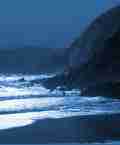


Irish Castles, Counties Laois & Westmeath
Irelandseye.com continues the tour of Ireland, moving to the centre of the country to focus on two counties; Laois and Westmeath.. Now to County Laois:
Dunamase Castle,
County Laois
The battered remains of this once-strong castle crowns a massive rock with superb views over the pass through the west Wicklow hills. It was built in the 13th century by William Marshall and his son-in-law William de Braose on the site of an Irish fort that Strongbow had obtained. It had a number of owners, notably Roger de Mortimer - who further fortified it - before it fell into the hands of the O'Mores in the 14th century. In 1641 it was taken from the O'Mores by Sir Charles Coote, retaken by Eoghan O'Neill in 1646 and finally captured and dismantled by the Cromwellians in 1650. William Marshall probably began the enormous rectangular tower on top of the hill. Much of the southern part has now vanished, while the northern portion was remodelled to form a stronghouse in the 16th century and a tower was added to the west wall flanking the entrance. The surrounding walls of the inner bailey were probably built by William de Braose around 1250. These are strongest on the vulnerable east side where there is a gateway flanked by oblong towers containing guard rooms.5 km (3 miles) W of Stradbally off the N80 Portlaoise Road. NGR: S 523980.
Lea (Leghe) Castle,
County Laois
Cromwellian troops dismantled some of Ireland's finest castles - not least of which was the great fortress of Lea. The core of the castle is a massive four-towered keep that bears such a striking resemblance to Carlow Castle that they must be contemporary, especially as both were owned by William Marshall. It therefore belongs to the early 13th century and if so, it must be one of the earliest of these distinctive castles comprising a rectangular block with cylindrical corner towers. Sadly, only one tower now stands to any height, but the main block had three storeys over a basement and like Carlow has a first-floor doorway by the north-east tower and a straight stair in the north wall. Few castles have had such an active history. Lea was burnt in 1285 by the O'Connors, in 1307 by O'More and in 1315 by Bruce, after which the adjacent town was abandoned. The castle was subsequently captured on many occasions and passed to the O'Mores, the FitzGeralds, the Earls of Ormonde and the O'Dempseys, before Cromwellian troops finally wrecked it in 1650. In the 18th century the celebrated horse-thief James Dempsey used the vaults of the keep as his stables.4 km (2.5 miles) E of Portarlington on a minor road N of the Monasterevin Road. NGR: N 571121.
Athlone Castle,
County Westmeath
Athlone used to be one of the most formidable medieval fortresses in Ireland, but warfare and substantial rebuilding have left little of the old castle above internal ground level. The construction of both a bridge and castle at this key river crossing began in 1210, following King John's visit to Ireland, when Bishop Henry de Grey was ordered to begin settling the middle Shannon region between Meath and Connaught. De Grey's stone tower, probably built on an earlier motte of 1199, had to be rebuilt the following year after it collapsed, killing nine of the garrison. It was again repaired in 1251 and in 1273-9 the curtain walls were probably added, flanked by massive D-shaped towers. Most of this structure was still present when drawn by Thomas Phillips in 1685, together with a fine suite of apartments, used by the Lord President of Connaught, overlooking the river.
The castle's strategic position meant that it saw a good deal of military action. In 1691 it suffered the heaviest bombardment in Irish history: Williamite General Ginkel attacked with over 600 bombs, 12,000 cannon balls and huge quantities of stones. The whole castle was rebuilt from 1793 to 1815, reduced in height and strengthened for the mounting of heavy cannon in efforts to fortify the Shannon against French invasion. The lower storey of de Grey's polygonal tower is the only part of the medieval fabric to survive.Athlone town. NGR: N 038413. from the Appletree Press title Irish Castles
Click here Irish Castles to buy the newly reformatted book from Amazon.co.uk. The previous edition of Irish Castles is also still available from Amazon.co.uk.
